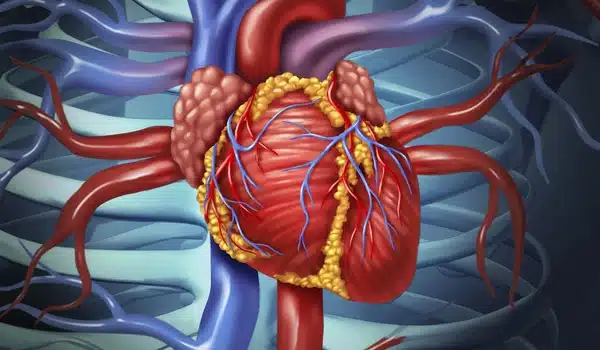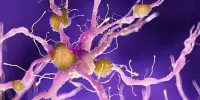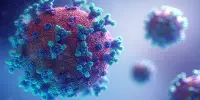Heart disease is a major public health concern worldwide, therefore any new research into its molecular causes could have far-reaching consequences for prevention and treatment. Over the last 15 years, researchers have discovered hundreds of areas in the human genome that are connected with an increased risk of heart attack. However, researchers lack efficient methods for investigating how these genetic polymorphisms are molecularly linked to cardiovascular disease, which limits efforts to create treatments.
To streamline the analysis of hundreds of genetic variants associated with coronary artery disease (CAD), a team of researchers led by investigators from Brigham and Women’s Hospital, a founding member of the Mass General Brigham healthcare system, in collaboration with the Broad Institute of MIT, Harvard and Stanford Medicine, combined multiple sequencing and experimental techniques to map the relationship between known CAD variants and the biological pathways they impact.
In a paper published in Nature, researchers used this approach on endothelial cells that line blood vessels. The researchers discovered that a critical biological process in a rare vascular illness may increase CAD risk.
Studying how hundreds of regions of the genome, individually or in groups, influence risk of heart attack can be a painstaking process. We decided we needed to have better maps showing how genetic variants affect gene expression and how genes affect biological function.
Rajat Gupta
“Studying how hundreds of regions of the genome, individually or in groups, influence risk of heart attack can be a painstaking process,” said corresponding author Rajat Gupta, MD, of the Divisions of Genetics and Cardiovascular Medicine at Brigham and Women’s Hospital. “We decided we needed to have better maps showing how genetic variants affect gene expression and how genes affect biological function. If we could combine those two kinds of maps, we could make the bigger connection from variant to biological function.”
The researchers created a mapping technique known as the Variant-to-Gene-to-Program (V2G2P) approach. First, the researchers collaborated with Stanford Medicine researchers to match CAD loci previously identified through genome-wide association studies to genes affected by these genetic variants. Then, using CRISPRi-Perturb-seq, a method created at the Broad Institute of MIT and Harvard, they “delete” hundreds of CAD-associated genes one at a time, examining how each deletion affected the expression of all other genes in that cell.
In total, the researchers sequenced 215,000 endothelium cells to see how 2,300 “deletions” affected the expression of 20,000 additional genes in each cell. They used machine learning methods to discover the biological pathways that consistently appeared to be linked to CAD-associated variations.

The researchers discovered that 43 of 306 CAD-associated variations in endothelial cells were linked to genes involved in the cerebral cavernous malformations (CCM) signaling pathway. CCM is a rare and devastating vascular disease that affects the brain, but the researchers speculated that smaller, subtler mutations in the CCM-related genes may add to CAD risk by influencing vascular inflammation, thrombosis, and endothelial structural integrity. Furthermore, the researchers identified a previously unknown involvement for the TLNRD1 gene in regulating the CCM pathway alongside other known CCM regulators, and suggested that TLNRD1 could be implicated in both CAD, a common disease, and CCM, a rare one.
Going forward, the researchers hope to study patients with endothelial CAD-associated variants as well as CCM patients to determine whether there are distinct opportunities for treating these populations. For the latter, the researchers are interested in determining whether further investigation into TLNRD1 can lead to better forms of genetic testing and risk stratification.
This study focused on endothelial cells, which line blood vessels and are increasingly understood to influence CAD risk. It examined endothelial mechanisms unrelated to lipid metabolism (a known driver of CAD risk with effective therapies, like statins) in hopes of uncovering other mechanisms driving CAD risk for which therapies may yet be developed.
“Now that we know more about this collection of endothelial cell variants, we can return to patients who have them to see if they have different clinical features or respond differently to the therapies we are already using,” Gupta said. “We are also focused on this study’s implications for CCM patients. It was a coincidence that from this genetic screen designed to look at coronary disease, we implicated new genes for a rare vascular disease, CCM. Perhaps now we can better describe the risk factors and pathways that drive it.”
Beyond CAD and CCM, the researchers underline that the V2G2P technique can be used to investigate the molecular pathways behind any disease for which a relevant cell type can be genetically manipulated in the laboratory.
“It was remarkable that this unbiased, methodical strategy, in which we eliminated all possible CAD genes in a single experiment, led us directly to new genes and pathways that had previously gone unnoticed. This approach will be a strong strategy for examining many additional diseases where genetic risk factors have yet to be identified,” said co-corresponding author Jesse Engreitz, PhD, an assistant professor of genetics at Stanford Medicine.
















